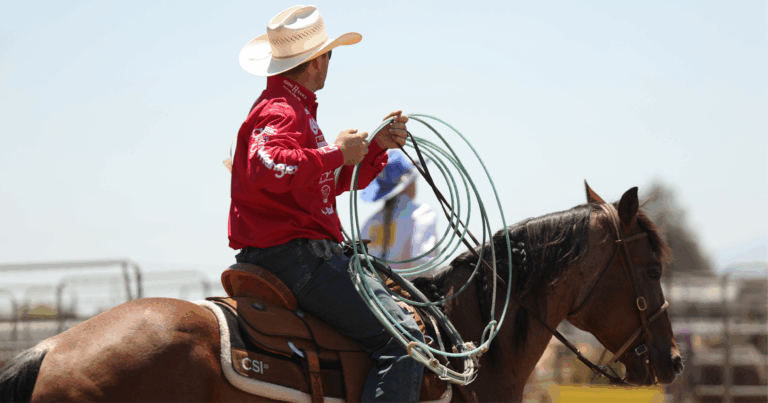Original Publication: Jan. 9, 2020
Not to sound too “Game of Thrones-ish,” but winter is still coming.
It’s only January. You lucky souls in Arizona notwithstanding, there are plenty of you in the Southeast with wet and icy conditions to come, and you folks hunkered down in Oregon or Utah, hauling blanketed horses on solid ice to the local indoor facility? It’s a little trickier to shake out a loop that feels good. Here’s your guide.
[Read more: The Rope Makers]
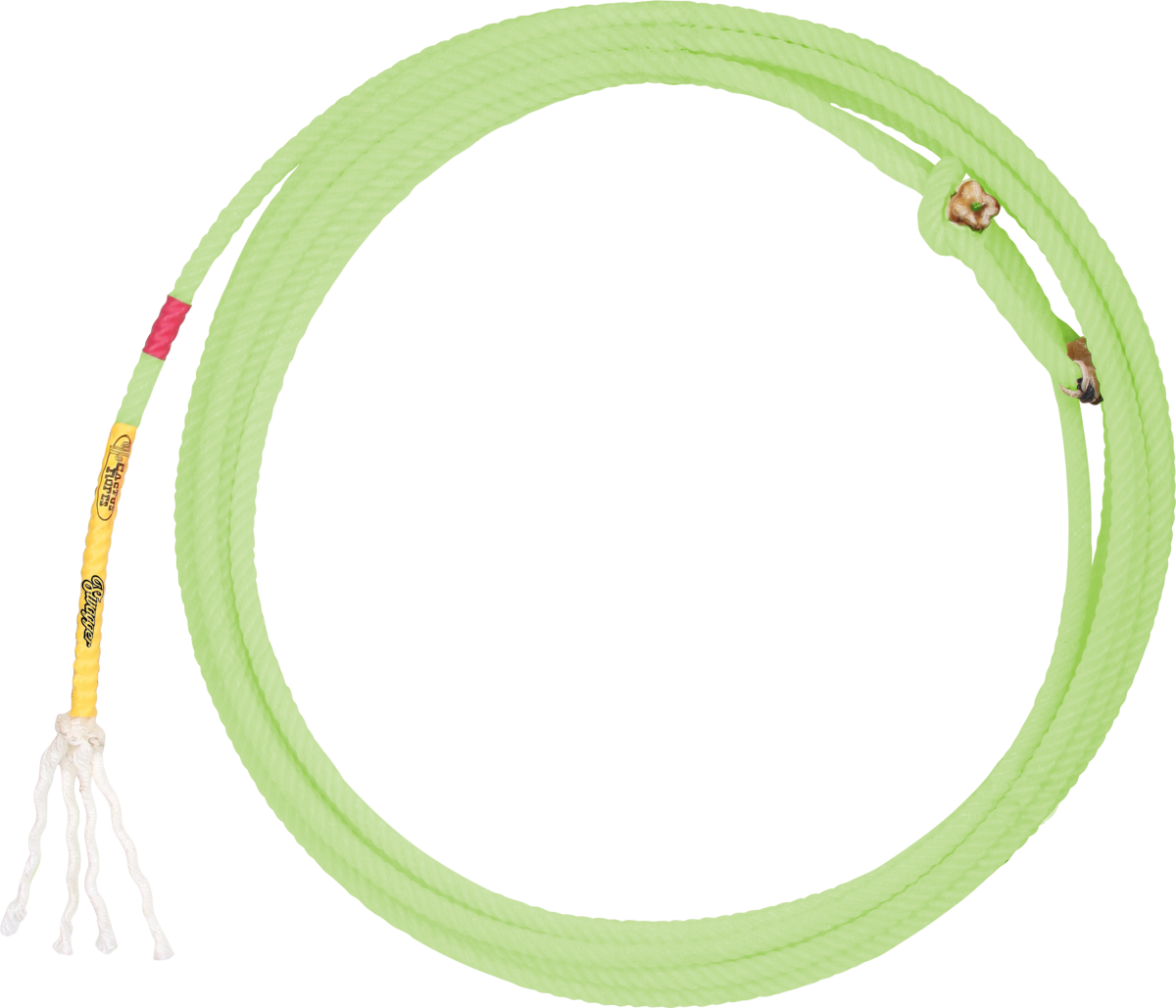
Material mayhem
Ropes now come in every dye and nylon-polyester blend known to man. But when temperatures drop, the philosophy has always been that pure nylon is more reliable. That’s because poly fibers soften and relax in the cold while nylon remains stiffer.
It’s not quite that simple, though. According to Fast Back’s general manager, Coy Upchurch, you can talk to 10 people and get 10 different ideas on what a rope is doing in the cold. The only comfort as you try to savvy the ins and outs of materials? Rope-makers are on top of things.
“The construction of ropes now offers so much consistency,” said Equibrand’s operations chief, Craig Bray. “The other day, I swung the original four-strand rope we ever made (Classic’s XR4), and it felt the same to me as it did the first day we tested it.”
Companies actually change their manufacturing technology from summer to winter months to compensate for climate differences. This is a great reason to either mail order your ropes or ask your local retailer when theirs arrived, so you know when ropes were made.
“We make our own string from fiber,” Bray said. “So we tweak the moisture in it during manufacturing or change the sprockets of the machines to tighten or loosen the twists in summer versus winter. We also roll the ropes differently when we finish them in winter versus summer, with more or less ‘kick.’”
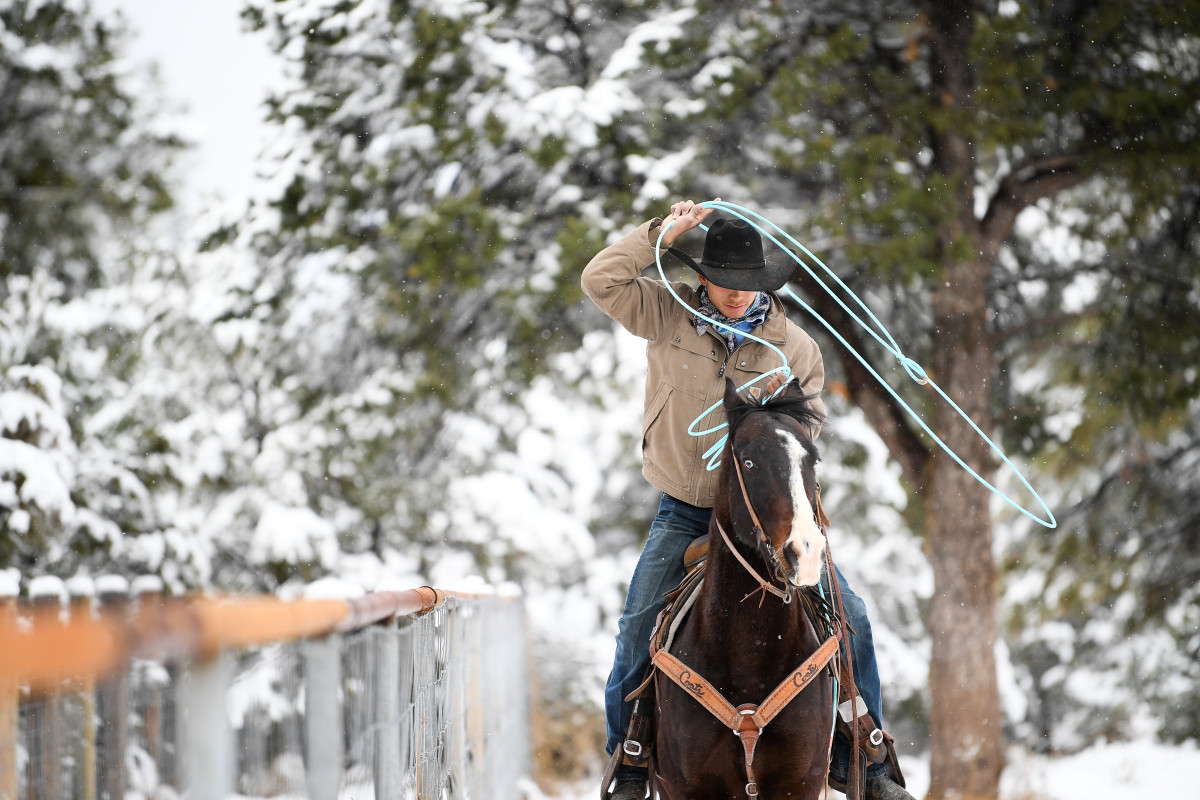
Bray likes a four-strand rope for wintertime consistency, and he personally prefers all-nylon when it’s frigid, such as Classic’s XR4, The Heat or Rattler’s GT4.
“Fibers relax in the cold, which is the opposite of a garden hose that draws tighter and gets harder,” Bray explained. “When it’s cold, a rope gets softer or unwinds, basically, and that’s what makes it want to come back to you. We increase the kick in colder seasons.”
Slingin’ nylon
Chase Tryan, a three-time NFR heeler from Helena, Montana, has had plenty of experience in cold climates. He used to switch around to different ropes in different seasons, but he always kept going back to Rattler’s all-nylon GT4. So that’s his all-season rope now.
“It seems like the lighter ropes don’t handle the cold as good,” Tryan said. “They might get kind of bouncy. Heavier ropes seem to do better when it’s 10 degrees or less.”
Cactus Ropes, too, coils its twines differently depending on the time of year. It finishes its summer ropes with a bit of backswing because, in warm temperatures, constricting fibers can push the eye of the rope dead straight. Cactus’ 2018 all-nylon ropes were actually designed for Las Vegas in December—and ropers won a lot of dough in Sin City with them.
Probably no company has more experience making all-nylon ropes for cold-weather customers than Sheridan, Wyoming’s King Ropes. The rope shop is manned by Danny Morales and Gary Medford, who each went to work there in high school in the 1970s.
[Read more: The Best Team Roping Rope: Finding the Right Rope for You]
“Blended ropes do some weird things when it gets cold,” Morales said. “A lot of guys like some ‘kick’ and in the cold, those ropes can flare the opposite way.”
But don’t underestimate color for what it can add to consistency. King’s has never given its ropes fancy names, but it has one red rope that fans say does not change with the wintry conditions—because of its red dye.
“Sometimes you simply need to go with a little stiffer lay in the winter,” added Morales, who sends ropes to customers from Texas to California. “Our red four-strand rope is a blend and it seems not to react as much. But I do think you want to stay away from too much poly—those ropes won’t last as long.”
Core of the matter
According to veteran rope-maker Curt Matthews of Top Hand, their nylon offerings—the light, snappy Honcho and Speed Williams’ own 8XC—are great in the cold.
“Speed likes his rope real quick with a lot of body, and it’s the nylon that keeps the rope tighter,” Matthews said. “The only disadvantage of all-nylon is it can be too stiff and too bouncy, so you need to make sure you pick the right lay.”
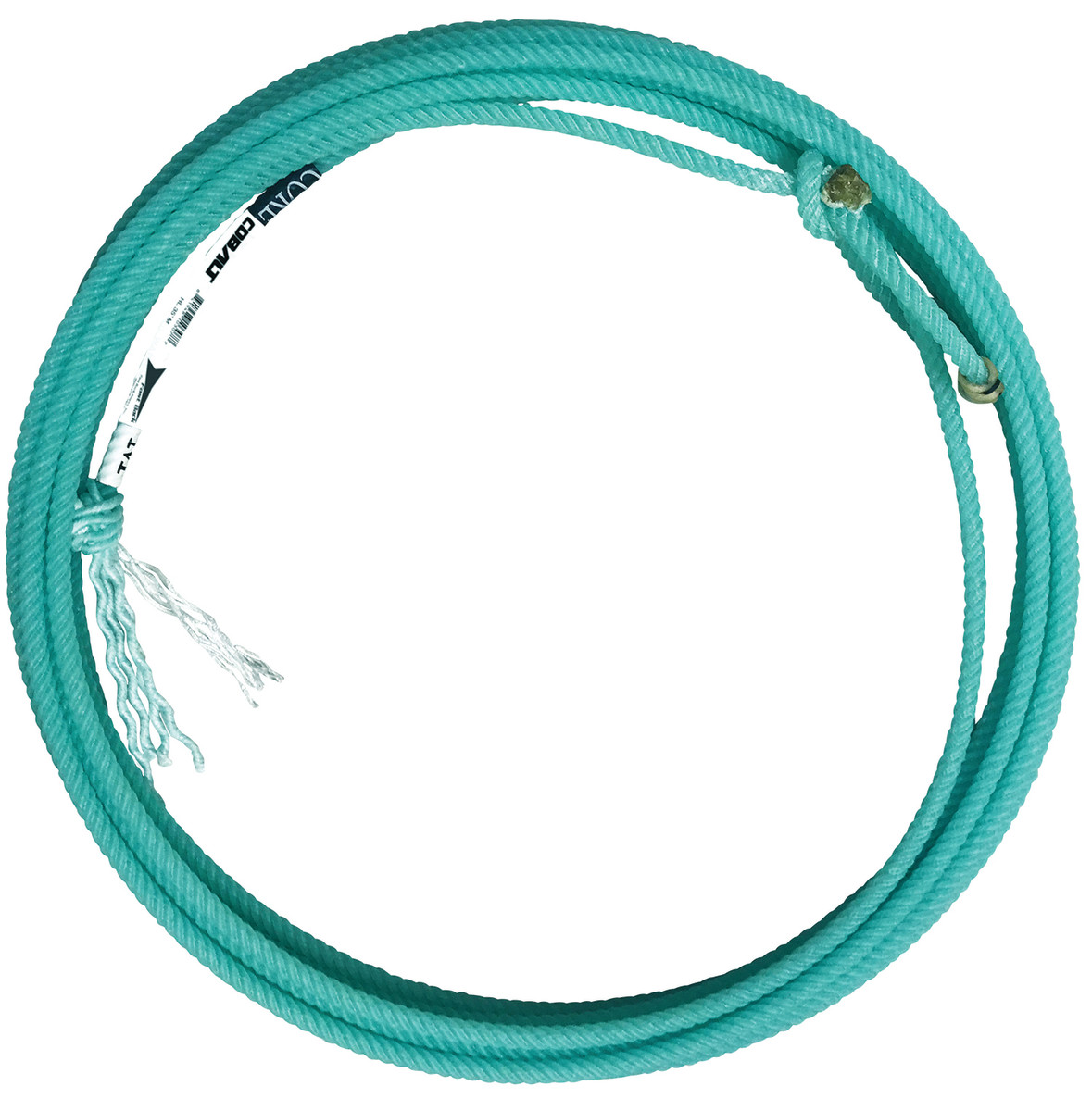
But Matthews says wintertime performance is about more than just materials—it’s about how a rope is put together. Here’s the news flash: Equibrand’s 20-year patent on the core finally ran out. One of team roping’s classic supporters, Classic innovated its CoreTech design in 1997. Today, the extended company’s lineup of ropes with cores runs from the XR4 to the Powerline, the Heat, the NXT, the GT4, the NV and the Spyder.
Only since 2018 have other companies been able to use core technology, which they say helps poly-blended ropes maintain their feel during a blizzard. If a rope has a core, the crowns of the twists are held in place by that core, which prevents stretch. So when the temperature drops, the rope doesn’t change as much.
“The rule of thumb with Fast Back was always that, in the winter, you’re better off with an all-nylon rope like the Venom,” Upchurch said. “But with us putting cores in ropes now, we’ve found that our blended Cobalt maintains its characteristics whether it’s really cold or hot. It really stays the same. It doesn’t follow what we used to tell people!”
Too, despite it being a hot day last June when Jr. Dees and Lane Siggins used their respective Pearl Snap ropes to win the BFI, Matthews swears that Top Hand’s blended—and cored—Pearl Snap performs just as well in the cold.
Barry Berg, team roper and Cactus Ropes general manager, says freezing temperatures can expand a hollow rope so that it gets out of balance (the eye moves just enough for some backswing to develop). But with a core, that doesn’t happen.
The company’s Thrilla and Swagger ropes—both nylon with a core—were first used at Finale XXII in Las Vegas. Nick Sartain heeled his way to $200,000 with one, while Luke McClanahan and Hondo Fryar caught $282,000 with theirs. Sartain, the 2009 world heading champ, had always used a poly blend until he began heeling with the Thrilla.
“The core takes the springiness out of these ropes,” said Sartain, an Oklahoman now living in Bandera, Texas. “But they’re still snappy feeling. This year, I’ve started using the Swagger because it’s a little bigger in diameter and a little heavier. If it’s real cold, I like a little heavier rope. Sometimes a lighter one gets knocked around a little bit when you set it down. Of course, if a rope is too big or heavy, it’s hard to swing it fast enough to stay ahead of the steer. But if you can get enough speed on a heavier heel rope, it’s a lot more forgiving once you put it down.”
Sartain won gold at the head end with a Whistler, but when he cut his thumb off and had to change his grip, he needed something a bit more substantial there. The Thrilla lets him feel his tip with the rope held deeper in his hand. He also says he gets more runs out of a rope with a core. Upchurch, too, has noticed that combining dyed nylon with a core results in a tougher Fast Back rope with more longevity.
At the 2019 NFR, Cactus endorsees Chad Masters and Riley Minor were armed with Cactus’ brand new, cored Relentless edition, scheduled for a Jan. 1 release (still unnamed at press time).
Berg’s fondness for cores notwithstanding, a core in your rope may not be the end-all, be-all. Remember, a hollow rope is nice and light for wintertime ropers whose shoulders might be a tad out of shape.
[Read more: Clay O’Brien Cooper: To the Core of the Rope Conversation]
“It’s all about what feel you like,” Upchurch said. “A rope with a core has more tip weight. Our Ultimate 4 has no core and is a best-seller because it’s a little lighter.”
Keeping it tight
Here’s a no-brainer if you live where the seasons include winter: Don’t keep your ropes in your frosty trailer. Tryan, in fact, learned from various Montana Circuit Finals Rodeos that a rope might feel good to swing at the trailer when it’s 15 degrees below zero—but then not so great once he gets inside Great Falls’ 65-degree Four Seasons Arena.
“That big of a temperature change can be hard on ropes, so I got to putting my ropes in my hotel room,” he said. “I try to keep them in consistent temperatures.”
Most rope-makers advise you keep a rope’s home temperature as consistent as possible. Sartain kept all his weapons in his living-quarters trailer with the heater out in Las Vegas and when he was rodeoing, or takes them into hotel rooms.
“If you don’t let them get as cold at night, they’re not as brittle feeling,” he said. “I don’t worry about it much in the summer. But in winter, I try to keep them as warm as I can to keep that little bit of deadness. I don’t like a real bouncy rope.”
The best way to keep your rope feeling great is to break it in right. According to every single rope maker, you need to break in a rope by only coming tight with it on four to eight steers. Then let it rest for 24 hours or even 48 hours. Don’t keep stretching it.
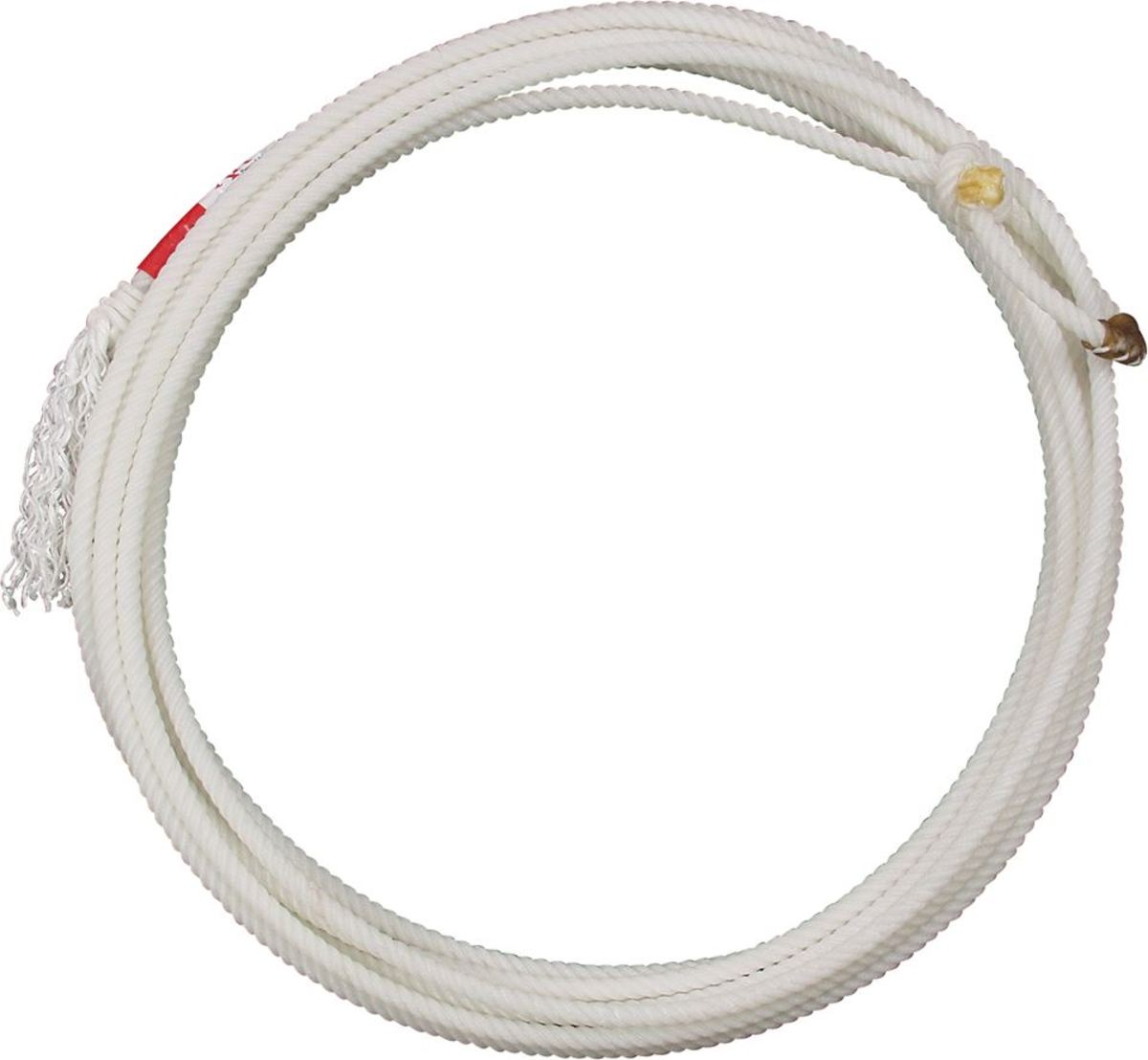
“You need to let those fibers set and lock in their place,” Bray said. “If you keep hammering with it, you break it down before it has a chance to come back to itself.”
Basically, your rope—hot or cold—will last longer and feel better if it gets a handful of stretches and then has a chance to set and lock into place at room temperature. It needs that rest to hold its lay. Materials have a memory.
The bottom line? If you dally on 25 head with a soft rope right out of the twisties, well, that wouldn’t be any smarter than refusing to rope just because it’s a little chilly outside.





